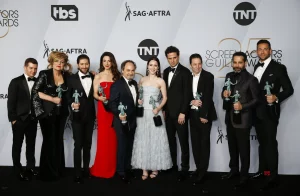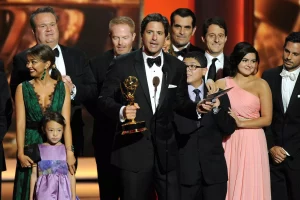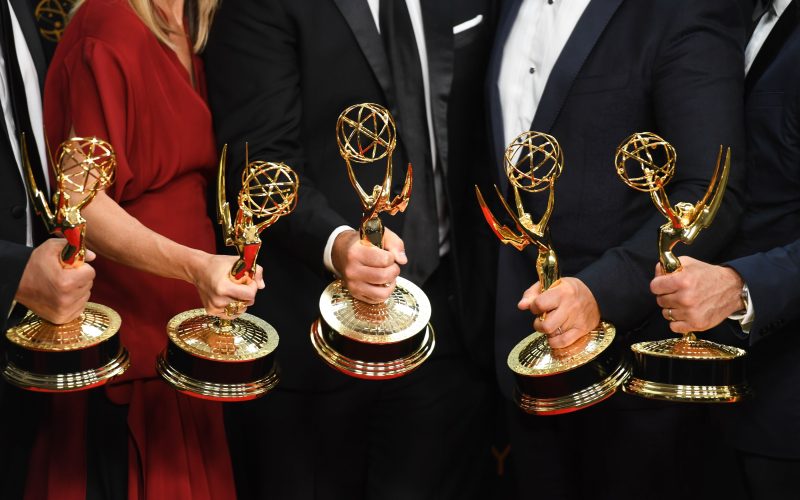Introduction
Award shows have long been a staple in the entertainment industry, celebrating the achievements of artists, filmmakers, musicians, and other creative professionals. Over the years, these glamorous events have evolved significantly, reflecting broader societal changes. One of the most notable shifts has been the increasing emphasis on inclusivity and representation. This article delves into the history, transformation, and current state of award shows, focusing on how they have become more inclusive and representative of diverse talents and stories.
Historical Context

-
The Early Years
The origins of award shows can be traced back to the early 20th century. The first Academy Awards, also known as the Oscars, were held in 1929. These early ceremonies were exclusive events, often limited to industry insiders. The focus was primarily on recognizing the work of predominantly white, male artists, reflecting the societal norms and biases of the time.
-
Mid-20th Century
As the entertainment industry grew, so did the number and variety of award shows. The Golden Globe Awards, Grammy Awards, and Tony Awards emerged, each celebrating different facets of the arts. However, these events still largely mirrored the lack of diversity seen in society. Women and people of color were often underrepresented, both in nominations and wins.
The Push for Inclusivity

-
The Civil Rights Movement and Beyond
The 1960s and 1970s were periods of significant social upheaval, with movements advocating for civil rights and gender equality gaining momentum. These societal shifts began to influence the entertainment industry, albeit slowly. The push for inclusivity started to permeate award shows, leading to more diverse nominations and winners.
-
The Role of Activism
Activism has played a crucial role in pushing award shows towards greater inclusivity. Organizations like the NAACP (National Association for the Advancement of Colored People) and GLAAD (Gay & Lesbian Alliance Against Defamation) have been instrumental in advocating for better representation of marginalized communities in media and entertainment. Their efforts have led to increased awareness and tangible changes in how award shows operate.
Milestones in Inclusivity

-
Breaking Barriers
Several landmark moments have marked the journey towards inclusivity in award shows. For instance, Hattie McDaniel became the first African American to win an Oscar in 1940 for her role in “Gone with the Wind.” Sidney Poitier’s historic Best Actor win in 1964 for “Lilies of the Field” was another significant milestone.
-
Gender Inclusivity
The fight for gender equality has also seen progress. Kathryn Bigelow’s win for Best Director at the 2010 Oscars for “The Hurt Locker” was a groundbreaking moment, making her the first woman to receive the award. Similarly, the rise of female-centric award shows like the Women in Film Crystal + Lucy Awards has highlighted the achievements of women in the industry.
-
LGBTQ+ Representation
The representation of LGBTQ+ individuals in award shows has also seen significant strides. Ellen DeGeneres’ coming out in the late 1990s and subsequent success paved the way for greater acceptance of LGBTQ+ artists. The success of films like “Broke back Mountain” and “Moonlight,” which won the Best Picture Oscar in 2017, has further highlighted the importance of LGBTQ+ stories.
Modern-Day Inclusivity

-
Expanding Categories
One of the ways award shows have become more inclusive is by expanding their categories to recognize a broader range of talents and stories. For example, the Grammys have added categories for different genres of music, while the Oscars have introduced new rules to ensure greater diversity among nominees.
-
Diverse Panels and Judges
Another significant change has been the diversification of judging panels and voting bodies. Organizations like the Academy of Motion Picture Arts and Sciences have made concerted efforts to include more women, people of color, and international members in their ranks. This has led to more diverse perspectives and, consequently, more inclusive nominations and winners.
-
Globalization
The globalization of the entertainment industry has also influenced award shows. Events like the International Emmys and the Cannes Film Festival have brought international talents into the spotlight, promoting cultural exchange and recognizing the contributions of artists from around the world.
Challenges and Criticisms

-
Tokenism
Despite the progress, award shows still face criticisms of tokenism, where diversity is more about optics than substantive change. Critics argue that simply including a few diverse nominees or winners is not enough and that systemic changes are needed to ensure long-term inclusivity.
-
Lack of Representation Behind the Scenes
While on-screen representation has improved, there is still a significant lack of diversity behind the scenes. Efforts to include more women, people of color, and LGBTQ+ individuals in roles such as directing, producing, and writing are ongoing but require more robust initiatives.
The Future of Inclusivity in Award Shows

-
Technological Advancements
The rise of streaming platforms and social media has democratized the entertainment industry, providing a platform for diverse voices that might not have been heard otherwise. This technological shift is likely to influence how award shows evolve, making them more inclusive and representative of a broader range of talents.
-
Grassroots Movements
Grassroots movements advocating for inclusivity and representation are gaining momentum. These movements are likely to continue pushing for changes in how award shows operate, ensuring that they reflect the diversity of society more accurately.
-
Institutional Changes
Institutional changes within the organizations that run award shows are crucial for long-term inclusivity. This includes implementing policies that promote diversity, providing funding and support for underrepresented artists, and ensuring that judging panels are diverse.
Conclusion
The evolution of award shows towards greater inclusivity and representation is a reflection of broader societal changes. While significant progress has been made, there is still much work to be done. As the entertainment industry continues to evolve, it is essential for award shows to keep pace, ensuring that they celebrate the achievements of all artists, regardless of their background. By doing so, award shows can not only reflect the diversity of society but also inspire future generations of artists to tell their stories.










